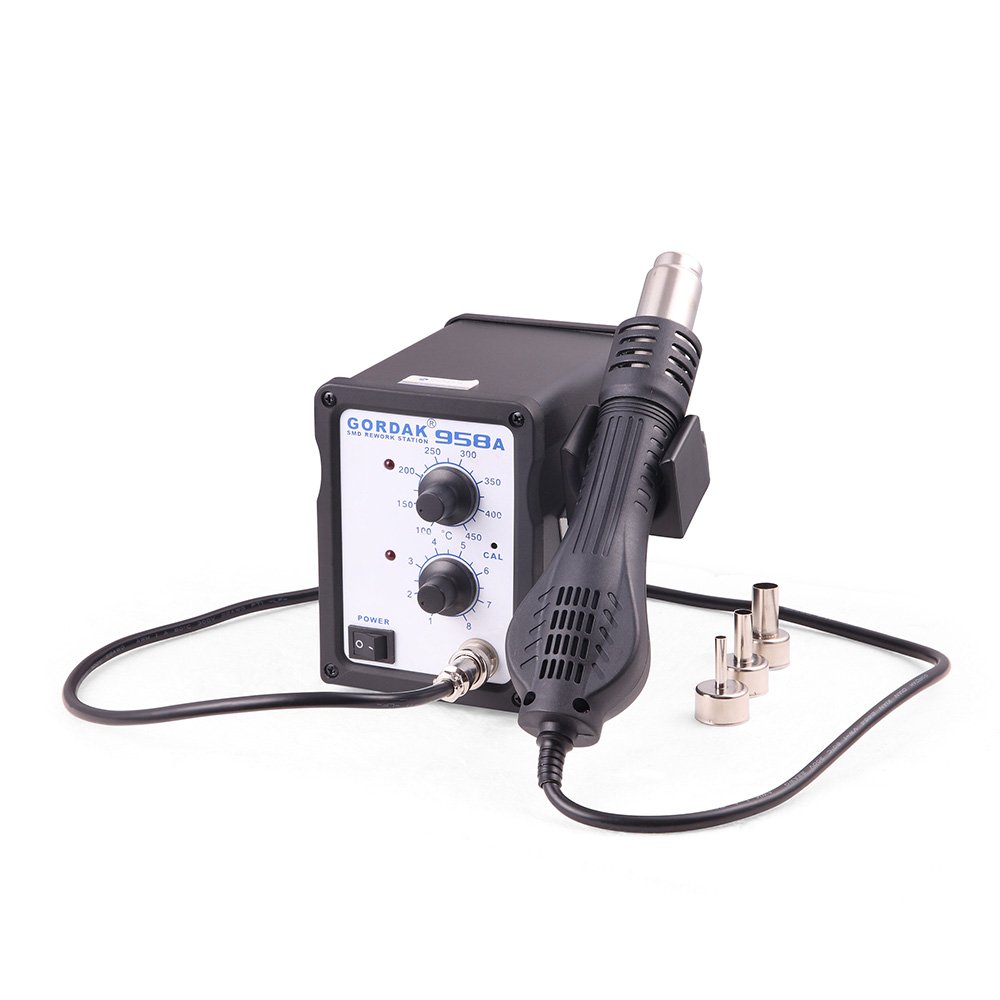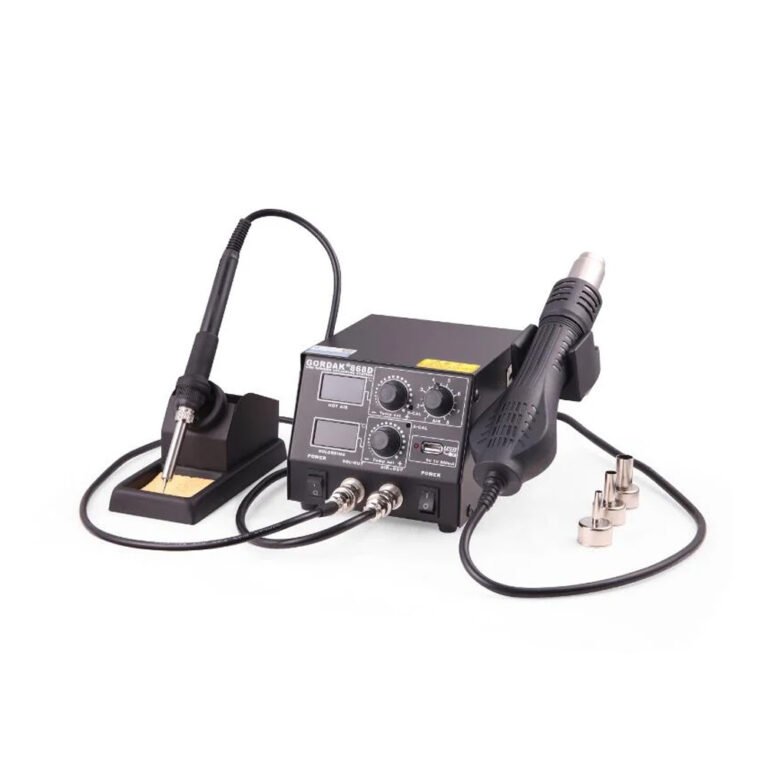When working on modern electronic devices, selecting the right soldering equipment is crucial for efficiency, safety, and quality. Two common types of equipment are hot air rework stations and lead-free soldering stations. While both are essential for electronics repair and assembly, they serve different purposes and are optimized for different tasks. This article explains the differences, benefits, and ideal use cases for each.
What Is a Hot Air Rework Station?
A hot air rework station uses a controlled stream of heated air to melt solder on surface-mount devices (SMDs) and integrated circuits (ICs). Key features include:
- Adjustable Temperature and Airflow: Ensures precise heating for delicate components.
- Soldering and Desoldering Capabilities: Ideal for replacing SMDs like BGAs, QFPs, and PLCCs.
- ESD-Safe Design: Protects sensitive electronic components.
- Versatility: Can be used for soldering, desoldering, heat-shrinking, and reflowing solder paste.
Hot air rework stations are particularly useful for compact, high-density PCBs where traditional soldering irons cannot reach.

What Is a Lead-Free Soldering Station?
A lead-free soldering station is designed for standard through-hole or surface-mount soldering using lead-free solder. Key features include:
- Temperature Control: Maintains optimal heat for lead-free solder, which typically melts at higher temperatures than leaded solder.
- Variety of Tips: Fine-point or chisel tips allow precision soldering.
- Stability and Safety: ESD-safe designs and ergonomic handles improve accuracy and comfort.
Lead-free soldering stations are ideal for general electronics assembly, repairs, and hobby projects where lead-free compliance is required.
Key Differences
| Feature | Hot Air Rework Station | Lead-Free Soldering Station |
|---|---|---|
| Primary Use | SMD rework, IC replacement | Through-hole and SMD soldering |
| Heat Source | Stream of hot air | Heated soldering iron tip |
| Temperature Control | High precision for delicate components | Optimized for lead-free solder temperatures |
| Ideal Components | BGAs, QFPs, PLCCs, tiny SMDs | General PCBs, resistors, capacitors, microcontrollers |
| Additional Uses | Desoldering, reflow solder paste, heat-shrink tubing | Standard soldering tasks |
| Learning Curve | Moderate | Low to moderate |
Choosing the Right Station
- Use a hot air rework station for precision SMD work, IC replacements, or reflowing solder paste.
- Use a lead-free soldering station for general assembly, through-hole components, or projects requiring lead-free compliance.
- Many professional technicians use both in combination to cover all electronics repair scenarios.
Tips for Safe and Effective Use
- Always work in a well-ventilated, ESD-safe workspace.
- Use flux when working with SMD components to ensure smooth solder flow.
- Preheat boards when using hot air to prevent PCB warping.
- Maintain soldering tips clean and properly tinned for optimal heat transfer.
About GORDAK
Gordak is a leading manufacturer of soldering and rework equipment, providing high-quality, reliable, and innovative tools for electronics professionals worldwide. With over 30 years of industry experience, Gordak combines advanced technology, precise temperature control, and ESD-safe designs to meet the needs of SMD and through-hole soldering applications. Committed to excellence, Gordak offers affordable solutions, responsive customer support, and products trusted by clients across the globe.



